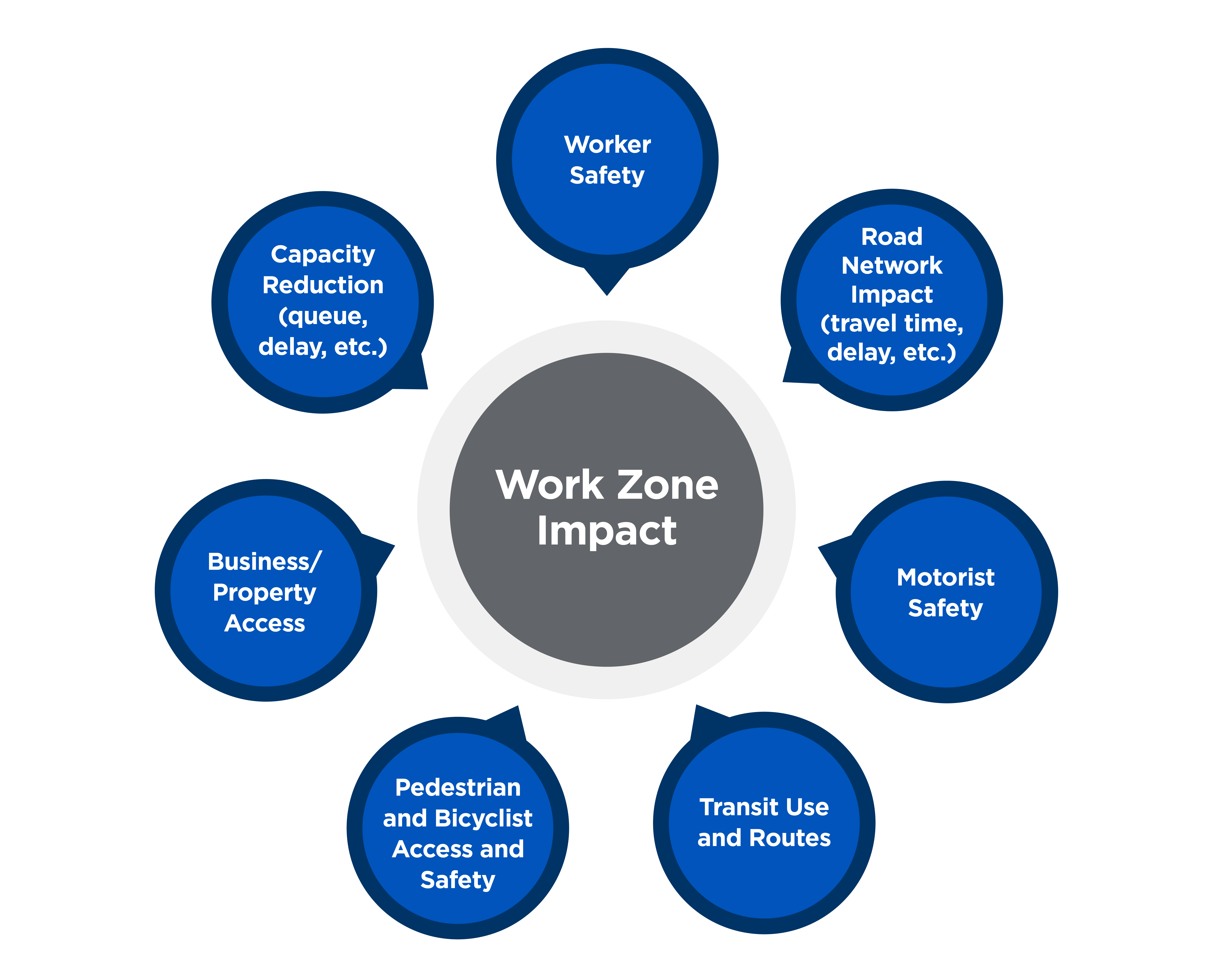
Transportation management plans (TMPs) are well-thought-out plans that document the impacts that a significant transportation project’s work zones will have on the broader transportation network. TMPs help proactively identify solutions for potential operational and safety problems that may arise as a result of changes in traffic patterns.
In 2004, the Federal Highway Administration’s (FHWA) Work Zone Safety and Mobility Rule was enacted to support the continuous improvement of work zones. Within the rule, the TMP is identified as a strategic tool used for guiding the design and implementation of work zones within project sites. As a result, TMPs are required for federally funded transportation projects and are recommended for all work zone projects regardless of the funding source. While the FHWA does not mandate a format or approach to a TMP, each state has guidelines for the development of these plans for locations within its boundaries.
Historically, TMPs were written to meet the requirements of the FHWA and the state for which they were written. While these were written, reviewed and implemented, performance measures were not actively tracked or reported for future use. Project owners genuinely concerned about improving work zone outcomes for workers and the traveling public have realized they can use TMPs to gather data that will inform future TMP development and further enhance safety and mobility in work zones.

